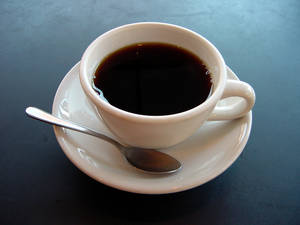What makes the perfect cup of coffee?
Interview with
Coffee now and the chemistry behind your morning fix. Scientists have now sequenced the genetic code of the coffee plant to help them work out why really great coffee tastes and smells the way it does. Graihagh Jackson went to meet coffee connoisseur Liz Booker, from Starbucks, and botanist Alex Monroe, from the Natural History Museum...
Alex - There are about 68 to 70 species of coffee of which probably 8 have been used  for producing a beverage. Most of the current coffee market would be Robusta which is one of the species and Arabica which is the one probably most people are familiar with.
for producing a beverage. Most of the current coffee market would be Robusta which is one of the species and Arabica which is the one probably most people are familiar with.
Graihagh - So, what sort of benefit does genome sequencing have?
Alex - It provides us with a whole suite of tools for us to tease apart how the plant generates the chemicals which are represented by that flavour and then you can start looking at ways of identifying the genes you think are responsible for flavour, and then you can go and look for those genes in lots of different individual plants growing all over the world.
Graihagh - And one thing they looked at in particular there I thought was interesting is, how caffeine had evolved in plants. Why are all these different varieties evolving to have caffeine in their leaves, in their fruit?
Alex - It's basically assumed that that chemical is produced to defend the plant from probably, insects.
Graihagh - We're sitting in Starbucks and with me is Liz Booker. Liz, you're the chief coffee taster for Starbucks. What makes the perfect cup of coffee? I mean, we've talked a bit about how there's lots of different interesting flavours. Is it all down to the genes or is there more to it than that?
Liz - There's much more to it than that. So, you want to start off with a really great coffee plant and a really great seed which is the coffee bean. But then there's a huge amount of care and attention that you need to pay to the plant as a farmer, to be able to develop a tree that's going to bring you really fantastic beans. And then from growing really brilliant beans, you need to be able to pick them exactly at the most perfect time. And then you want to be able to process those coffee beans in the best way to bring out the flavour attributes of that coffee.
Graihagh - Can we try some?
Liz - Absolutely. So, what I brought for you here is a cupping and this is the professional way that we taste coffee at Starbucks when we're deciding whether or not we're going to purchase it. The first thing that we're going to be looking for is the aroma and there are about a thousand different kinds of aromas coming out of Arabica coffee.
Graihagh - So, we've each got one spoon - Alex, Liz and I.
Liz - First of all, we're going to break the crust. So, we've got hot water and ground coffee in these little glasses and there's a thick crust. The crust of coffee forms at the top. With this, we're actually going to break the crust and smell all the aromas in the coffee. So, first one that we're going to smell is the Zambia Terranova coffee.
Graihagh - Smells quite earthy to me. It's my initial instinct. What do you think, Alex?
Alex - It smells very warm and aromatic. It smells like coffee.
Graihagh - Smells like coffee. What can you smell?
Liz - For me, I'm getting a little bit of nectarine and peach, and then a little bit of vanilla as well. It's also got some really soft spiciness, a little bit similar to nutmeg for me. You want to grab a spoon. I'm going to show you how we taste the coffee professionally. So, you take a spoonful of coffee. The next thing that you have to do is slurp the coffee. The reason that we slurp coffee is we want to get all the coffee up into our sense of smell. It's the noise that your mum shouldn't be proud of you making.
Graihagh - It's a very fierce slurp. Okay, so this one is the Zambia one.
Liz - It's a little bit like whistling backwards. So, if you can whistle and then think about reversing it then that's how you get a really good slurp. You should be able to pick up some of those really beautiful bright juicy notes.
Graihagh - Given that there's so much at play here when you're tasting coffee, do we really need another variety?
Liz - I think definitely being able to work out how to get plants that are stronger, being able to have plants that are going to be more resistant to disease will ensure that farmers are able to produce really high quality crops and then develop really gorgeous flavours within them. So, I think that would be fantastic for the farmers.
Kat - That's Liz Booker and Alex Monro, slurping along with Graihagh Jackson.
Chris - Kat (slurping), do you know what that is?
Kat - What is that? A cup of tea.
Chris - PG tips. Did you get the delicate notes in there?
Kat - Only the delicate noise of your slurping, Chris.
References
- Previous How hackers use email
- Next What your mobile says to criminals...










Comments
Add a comment